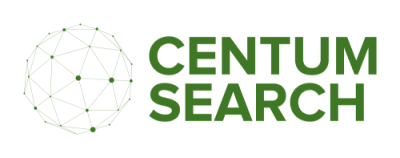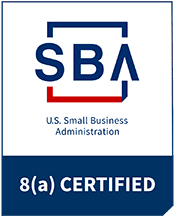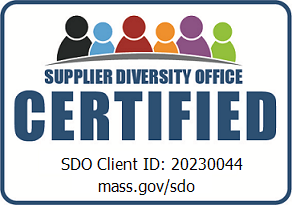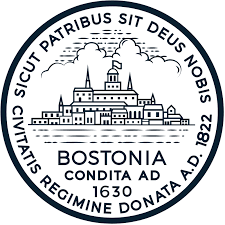Assessing Culture Fit for Employers and Applicants

Decades of research show hiring decisions based solely on technical skills and a single interview are proving insufficient for long-term success. While traditional interviews can assess qualifications and basic compatibility, they fall short of revealing the deeper cultural alignment that drives employee engagement, retention, and performance.
This comprehensive guide explores why culture fit requires a more nuanced approach and provides actionable strategies for both employers and candidates to navigate this critical aspect of the hiring process.
Why One Interview Can't Capture True Culture Fit
The limitations of single-interview assessments become apparent when examining the complexity of cultural alignment. Harvard Business Review research emphasizes that poor culture fit can cost organizations between 50%-60% of an employee's annual salary due to turnover. This substantial financial impact underscores why superficial assessments during brief interview windows are inadequate for making such consequential decisions.
Behavioral interviews, while structured and popular, have inherent limitations that prevent comprehensive culture assessment. They focus heavily on past experiences, which may not always predict future performance in new cultural environments. Additionally, well-prepared candidates can craft polished responses using frameworks, potentially masking their true workplace behaviors.
The limitations become even more pronounced in remote and hybrid work environments, where cultural nuances are harder to observe and assess through traditional face-to-face interactions. Companies that rely solely on initial interviews often discover misalignments only after new hires struggle to integrate with existing team dynamics.
Strategies for Employers to Deepen Culture Assessment
Define Your Cultural DNA First
Before evaluating candidates, organizations must clearly articulate their cultural identity, values, and practices. This foundational step involves identifying core values, work styles, and behavioral expectations that define success within the organization. Companies should develop a comprehensive culture playbook that outlines values, work environment, leadership style, and team dynamics.
Implement Multi-Touchpoint Evaluation
Progressive tech companies are moving beyond single interviews toward comprehensive assessment frameworks. This includes structured activities that simulate real workplace scenarios, allowing candidates to demonstrate their cultural adaptability in authentic contexts. Trial projects and collaborative tasks reveal how candidates communicate under pressure, approach problem-solving, and navigate team dynamics.
Leverage Peer Interaction Assessments
Involving current team members in the evaluation process provides invaluable insights into interpersonal compatibility. Peer interviews can assess candidates' communication styles, conflict resolution approaches, and collaborative tendencies more effectively than hierarchical interview structures. This multi-perspective approach helps identify candidates who will integrate successfully with existing team dynamics.
Ask Strategic Behavioral Questions
Employers should focus on behavioral questions tailored to their specific cultural values. Rather than generic queries, questions should explore real-world scenarios that reveal alignment with organizational principles. For example, if innovation is a priority, ask about times candidates introduced new ideas or processes that improved outcomes.
Strategies for Candidates to Evaluate Cultural Alignment
Research Beyond Job Descriptions
Candidates should leverage multiple sources to understand organizational culture, including employee reviews on platforms like Glassdoor, LinkedIn insights, and company websites. This research provides a more comprehensive view of the actual work environment beyond polished recruiting materials.
Ask Targeted Questions
During interviews, candidates should inquire about specific cultural elements, including management styles, conflict resolution approaches, and professional development support. Questions about work-life balance, team collaboration methods, and company values provide crucial insights into organizational culture.
Identify Red Flags
Warning signs of poor cultural fit include disorganized interview processes, high turnover rates in the target team, vague responses about company culture, and pressure to accept offers quickly. These indicators often signal deeper cultural issues that could impact job satisfaction and career growth.
Evaluate the Interview Process Itself
The hiring process itself reveals significant cultural information. Companies with strong cultures typically have well-structured, respectful interview processes that involve multiple team members and provide clear communication throughout.
Impact on Retention, Collaboration, and Performance
Research consistently demonstrates that strong cultural alignment drives superior business outcomes. MIT Sloan Management Review and Glassdoor research shows that good corporate culture correlates with better financial performance, increased innovation, and greater customer satisfaction. Companies with strong cultures experience significantly higher employee engagement and retention rates.
The collaborative benefits are particularly pronounced in tech environments, where cross-functional teamwork and rapid iteration require seamless communication and shared problem-solving approaches. Teams with strong cultural cohesion demonstrate better project outcomes, more effective knowledge sharing, and higher overall productivity.
Culture-aligned employees show increased job satisfaction, stronger connections with colleagues, and greater commitment to organizational goals. They are more likely to remain with the organization long-term, reducing costly turnover and maintaining team stability.
Building a Comprehensive Culture Assessment Strategy
Successful tech organizations are implementing holistic evaluation frameworks that span the entire hiring and onboarding process. This approach includes pre-interview cultural research, multiple interaction touchpoints, collaborative project work, and structured integration periods.
The assessment process should be ongoing rather than limited to initial hiring decisions. Cultural fit evaluation continues through onboarding, training, and daily workplace interactions, allowing organizations to support successful integration and identify potential misalignments early.
For candidates, this evolution requires more proactive engagement in the evaluation process, treating cultural assessment as mutual discovery rather than one-sided evaluation. Both parties benefit from transparent discussions about values, work styles, and long-term goals.
Reflection Questions:
How might your organization's current hiring process evolve to better assess cultural fit while maintaining efficiency and candidate experience?
What specific changes could you implement in the next 90 days to improve cultural alignment outcomes and build stronger, more cohesive teams?
Sources:
“(25) Culture Fit: The Interview You’re Missing (But Shouldn’t Be!) | LinkedIn.” Accessed June 15, 2025. https://www.linkedin.com/pulse/culture-fit-interview-youre-missing-shouldnt-ufkoc/.
Bouton, Katie. “Recruiting for Cultural Fit.” Harvard Business Review. Accessed June 15, 2025. https://hbr.org/2015/07/recruiting-for-cultural-fit.
business.com. “The Importance of a Cultural Fit When Hiring.” Accessed June 15, 2025. https://www.business.com/articles/hire-for-cultural-fit/.
Group, Kofi. “Beyond Skills: How to Assess Cultural Fit in Interviews.” Kofi Group (blog), December 16, 2024. https://www.kofi-group.com/beyond-skills-how-to-assess-cultural-fit-in-interviews/.
Limited, HR com. “7 Ways To Determine Candidate Culture Fit (Besides Interview Assessments) - HR.Com.” Accessed June 15, 2025. https://www.hr.com/en/magazines/talent_acquisition/may_2023_talent_acquisition_excellence/7-ways-to-determine-candidate-culture-fit-besides-_lhtfxxte.html.
“MIT Sloan Management Review And Glassdoor Introduce The ‘Culture 500’ | 2019-06-25 | FLOOR Trends & Installation.” Accessed June 15, 2025. https://www.floortrendsmag.com/articles/105030-mit-sloan-management-review-and-glassdoor-introduce-the-culture-500.
Smiles at Work | The Official Happily.ai Blog. “The Science of Culture Fit: Moving Beyond Gut Feelings in Hiring,” January 18, 2025. https://blog.happily.ai/the-science-of-culture-fit-moving-beyond-gut-feelings-in-hiring/.
Staff, Dice. “The Biggest Tech Hiring Red Flags Related to Cultural Fit.” Dice Hiring (blog), May 30, 2025. https://www.dice.com/hiring/recruitment/hiring-red-flags-cultural-fit.
Team, Spark Hire Content. “7 Ways to Better Assess Candidates During Screening for Culture Fit Within Your Organization | Spark Hire,” February 28, 2025. https://www.sparkhire.com/learn/screen-candidates/7-ways-to-assess-candidates-for-culture-fit/.
Tech Interview Preparation – System Design, Coding & Behavioral Courses | Design Gurus. “What Are the Disadvantages of Behavioral Interview?” Accessed June 15, 2025. https://www.designgurus.io/answers/detail/what-are-the-disadvantages-of-behavioral-interview.
“The Power of Culture Alignment.” Accessed June 15, 2025. //www.workzinga.com/.
Subscribe to our newsletter!
Resources for Careers, Talent Acquisition and Management







